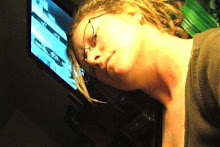1. What were some of the venues associated with the early underground film movement in New York City? What were some of the unique characteristics of the Charles Theater and its programming?
Cinema 16, Fashion Industries Auditorium, Living Theater, the Charles Theater, Thalia, New Yorker, the Bleeker Street Cinema
The Charles Theater had a diverse venue, from musicals to jazz shows to Italian neorealist dramas, cheap B movies and even Orson Welles's. Local art adorned the theater and it catered itself to the local art scene. Discussions would about film would erupt during the intermissions.
2. Which filmmakers did Jonas Mekas associate with the “Baudelairean Cinema”? Why did Mekas use that term, and what were the distinguishing characteristics of the films?
3. Why did underground films run into legal trouble in New York City in 1964? What film encountered legal problems in Los Angeles almost on the same day as Mekas’s second arrest in New York City?
That damned Worlds Fair -didn’t China just do something similar? Scorpio’s Rising
4. What were some of the defining characteristics of Andy Warhol’s collaboration with Ronald Tavel? What were some of the unique characteristics of Vinyl? How does Edie Sedgewick end up "stealing" the scene in Vinyl?
Tavel rewrote Clockwork Orange, stripped it down to its basic elements, and helped document Warhols factory -Vinyl was shot with one stationary camera. Sedgewick just sat on a truck and flicked her cigarette, but her eyes were so intense that they stole scene
5. In what ways did the underground film begin to "crossover" into the mainstream in 1965-1966? What films and venues were associated with the crossover? How were the films received by the mainstream New York press?
After Warhol's series, "The Chelsea Girls" was released, it gained popularity, partly due to an impressive review in "Newsweek," gave legitamacy to the film . It was the first underground film to screen at a major theater. Then the film spread throughout other major theaters around the country.
6. Why was John Getz an important figure in the crossover of the underground?
Midnight screenings of underground films at a theater owned by his uncle. called the " The Underground Cinema 12". This gave underground film more exposure then ever before.
7. How do Hoberman and Rosenbaum characterize Warhol’s post-1967 films?
He never again created anything that caused much of a buzz, but he did remain as a great influence over the sexual content in experimental films of the following era.
